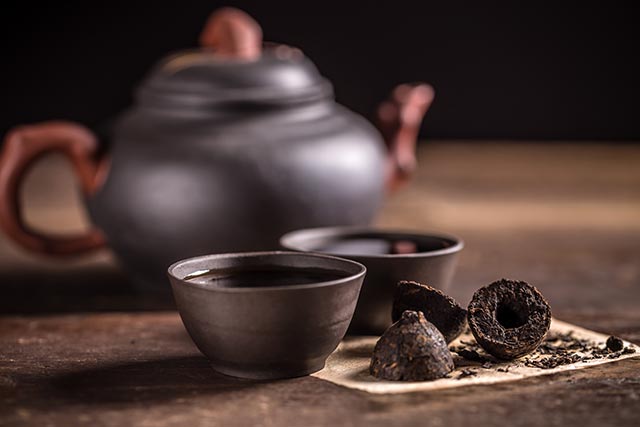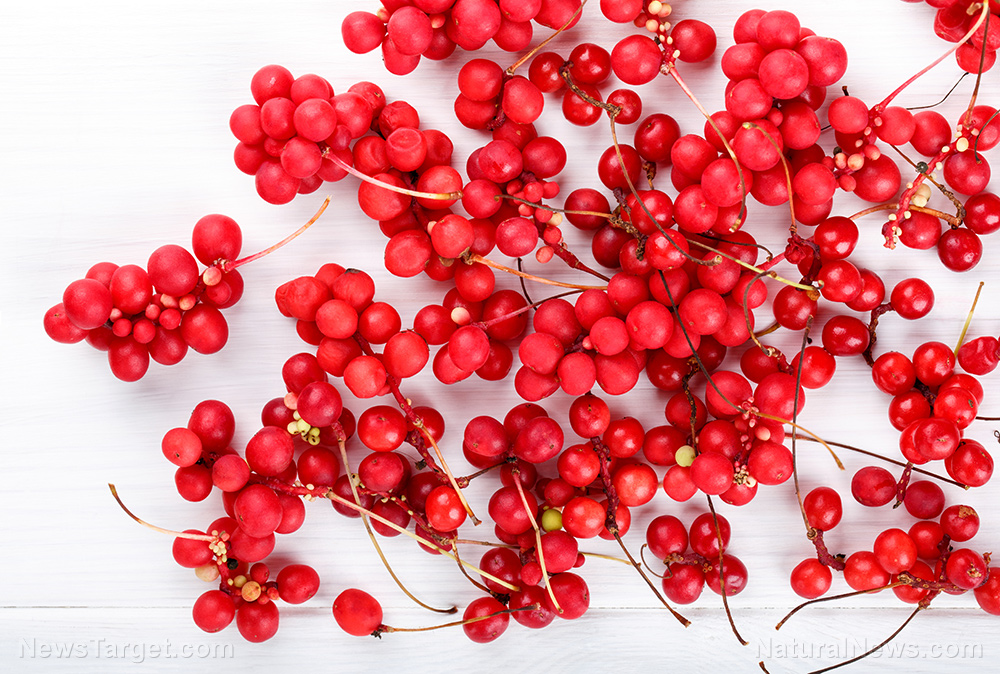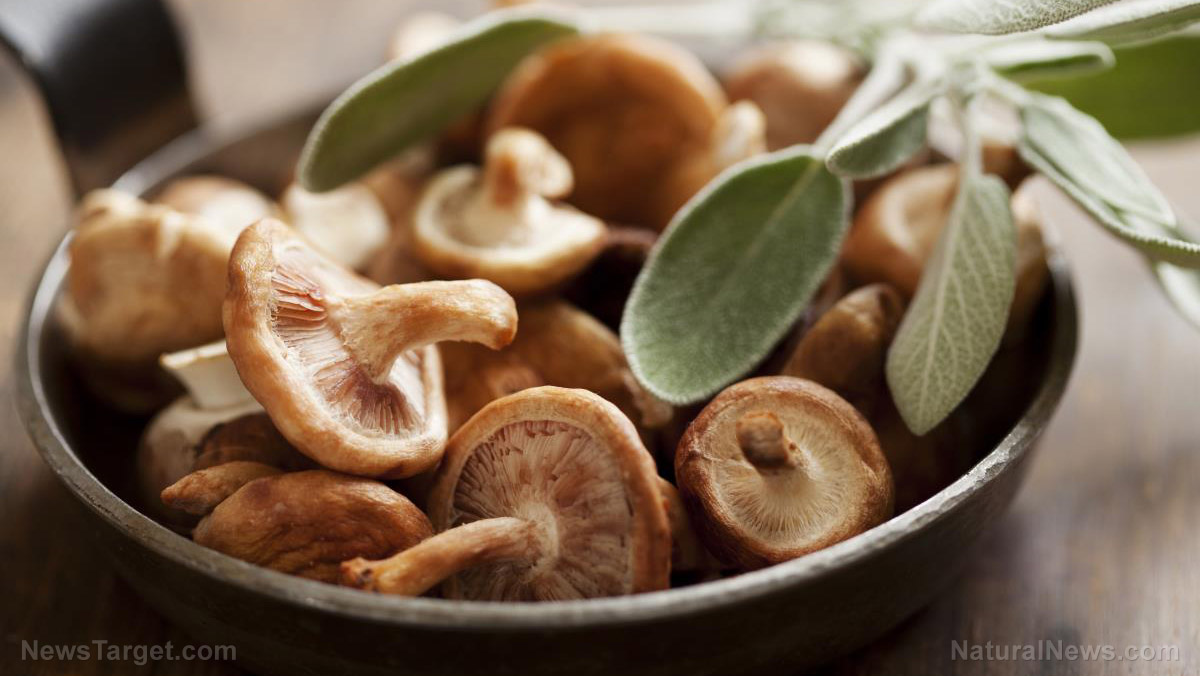Wikipedia’s skeptical assault on botanical medicine
04/22/2019 / By News Editors

Wikipedia’s co-founder Jimmy Wales claims to hold high standards of objectivity and balance in the content of the online encyclopedia and the integrity of his volunteer army of editors. Indeed this is largely true; except when it comes to the composition and editing of alternative medical systems and natural healthcare. A group of individuals and organizations, collectively known as Skeptics, who assert they represent “science-based medicine” now portend to be the final arbiters of what is and is not good medical science practice. However, it is our opinion the Skeptics are extremely biased towards erroneous, preconceived ideas and categorically refuse to accept an enormous volume of published medical research because it is contrary to Skepticism’s narrow and limited understanding of medical science.
(Article by Richard Gale and Gary Null republished from PRN.fm)
Among the many alternative health modalities that are targeted, criticized and debunked by the leaders and followers of Skepticism and Science Based Medicine (SBM) are the medicinal uses of botanical plants and herbs. Unfortunately Wikipedia increasingly parrots Skepticism’s biased attacks against medicinal herbs. As we reported in our earlier article “Wikipedia: Our New Technological McCarthyism,” the Skeptic community has now hijacked the editorial functions on Wikipedia’s entries dealing with alternative medical practices.
Of course, Skeptics do not claim to have any expertise in naturopathy, Chinese and Ayurvedic medicine, nor the medicinal use of herbs. Nor are they well-educated about botanical photochemistry and the use of botanical medicines for treating illnesses for centuries, even millennia, in traditional settings. Skeptics’ claims against botanicals are specious; they ignore the well-known fact that approximately 40 percent of drugs prescribed by conventional medical physicians are derived from botanicals that have been used for centuries. Furthermore, most of the top 20 drugs sold in the US today, including aspirin, are based upon a plant phytochemicals.[1] So are some common anti-cancer drugs such as Taxol (from a northwest pacific conifer/yew tree) — often given as a first line of treatment for certain breast cancers, the anti-leukemia drug Vinblastine or Vincristine (from an African periwinkle) and the anti-tumor drug Lapachol (from the Hawaiian trumpet tree).[2]
The history of world civilizations and their societies’ ability to persevere through lethal epidemics and disease is synonymous with the history of botanical medicine. One of the earliest findings to account for botanical medicine was found in a 60,000 year old burial site of a Neanderthal man in northern Iraq.[3] Among the remains were eight plant species, seven of which are still recognized for their medicinal value today. Before the advent of modern drug-based medicine and a profit-driven pharmaceutical industry built upon patented molecules, humans have relied upon the plant kingdom to treat health conditions, fight parasites and infectious diseases, treat wounds and gastro-enterological conditions and much more with their knowledge about plants’ healing properties. Our forbearing “doctors” had far keener insight into the biology of the human body than modern science grants them credit for. Through trial and error, certain plants were discovered to relieve adverse symptoms better than others, and over the course of centuries this became common traditional medical science. In the Skeptical utopia, however, thousands of years of human ingenuity and investigation into botanical medicine would be wiped clean and leave us only with drugs and their long lists of adverse effects and contraindications.
Nor should the research of the renowned pharmacognosist and internationally respected medicinal plant expert, Dr. Norman Farnsworth be forgotten for his pioneering work in validating numerous botanical plants’ bioactive medical properties. From 1970 until his death 2011. Farnsworth was head of Pharmacology department at the University of Illinois at Chicago. He brought together scientists and researchers from around the world to collaborate on drug discovery from medicinal plants. Many current plant-based pharmaceutical drugs are the fruits of his research. It is also largely on Farnsworth’s account efforts that high quality supplements are available today, having been part of Bill Clinton’s Commission to pass the Dietary Supplement Health and Education Act (DSHEA).[4]
Back in the 1990s, the small biotech startup Shaman Pharmaceuticals employed ethnobotanists and anthropologists to visit healers and shamans in their native settings, such as the Amazon and the Andean mountains, to learn which plants were used and for which conditions. For a short period of time the company was successful enough to go public and was traded on Wall Street. The hypothesis was that if a certain botanical herb had been used for centuries by traditional healers to treat a certain health condition, in theory, a long historical clinical trial had already been conducted. This in turn would help the company’s laboratory scientists to zoom in on the particular bio-molecules that were effective for a known disease. Traditional healers for centuries have followed a strategy of trial and error to identify plants or combinations thereof for treating numerous illnesses and infections. Some scientists understand this objectively, but not so the Skeptics who pride themselves today as the arbiters of medical truth.
According to a 2011 market report published by the University of Minnesota, the top botanical medicinal plants sold in the US include Ginkgo Biloba, Ginseng, Echinacea, Black Cohosh, Milk Thistle, St John’s Wort and Saw Palmetto.[5] Each of these hold an important place in traditional medical systems for treating specific health conditions. Since then Curcumin, the bioactive phytochemical in turmeric root and a medicinal herb used in every South Asian household, and resveratrol (a natural phenol found in the skins of grapes, blueberries and other berries) are now among the more popular botanicals recommended by naturopathists and increasingly among integrative physicians.
But if you were to search on Wikipedia to learn more about the medical benefits of these plants, you would come away severely shorthanded. In many cases the medicinal properties are altogether denied, the research ridiculed and the positive scientific evidence ignored in the online encyclopedia. In addition, the SBM-Skeptic community is largely a monolithic Anglo-American movement, which regards legitimate and accurate medical science as the proprietary privilege of developed nations such as the US. Underpinning its prejudices is a denial that good, creditable science can be executed in developing nations such as India, China, Iran, Brazil and elsewhere. On the other hand, these nations have a much higher respect for botanical medicine and are as eager, and perhaps far more sincere, to investigate the medicinal properties of plants that have been part of their cultures’ heritage for centuries. We have the same in the US among the Native Americans, yet the Skeptics attempts to colonize modern medicine has disregarded traditional Native American medicinal wisdom.
Therefore we will look at a few of these more popular botanical herbs that have been used medicinally for centuries and show how Wikipedia is a source of gross misinformation and fabricated facts when it deals with botanical medicine.
Curcumin:
Wikipedia states, “Although thoroughly studied in laboratory and clinical studies, curcumin has no confirmed medical uses.”[6] Wikipedia also cites a 2017 review of over 120 studies that disclaims any of curcumin’s therapeutic effects.[7]
For the moment we can ignore the 2017 review until we look later at the failures of the Cochrane Collaboration, the flagship medical review project of Evidence Based Medicine. However, the review only looked at 120 studies. In fact, there are over 11,800 entries for curcumin in the peer-reviewed literature found in the National Institutes’ of Health (NIH) PubMed database. According to the nonprofit HerbMed site, which has been recognized by the Wall Street Journal, Science magazine and the Western Journal of Medicine, there have been 375 human clinical trials and 499 animals studies, 74 observational case reports, 553 papers looking at curcumin’s pharmacodynamic properties and other studies investigating the plant’s chemistry, genetics and use in traditional societies.[8]
Contrary to the Cochrane review that only looked a 120 studies, a recent larger meta-analysis of curcumin’s ability to lower plasma leptin concentrations was conducted by universities in the US (Weill Cornell Medical), Greece (Aristotle University of Thessaloniki), Italy (University of Pavia), and Iran (Mashhad University of Medical Science) and concluded that curcumin significantly decreased adverse leptin levels.[9]
A double blind randomized controlled study, with 4-week monitoring, found that curcumin successfully improved all parameters of metabolic syndrome under investigation, including enhanced body-mass index, body-fat percent, blood pressure, lipid profile and C-reactive protein.[10]
An Australian study conducted at the universities of Newcastle and Southern Queensland found curcumin sharply improved neurocognitive functioning and cerebral endothelial vasodilator function in elderly patients that may reduce dementia risks.[11]
To further reinforce the health benefits of curcumin and discredit Wikipedia’s Skepticism, the federal government has provided $150 million in curcumin research through the National Center for Complementary and Integrative (CAM) Health. For a period of time the MD Anderson Cancer Center had a separate laboratory conducting curcumin research. As we wrote in our previous article, Skeptics and SBM appear to abhor CAM medicine. However, as foolish as the US government is with ridiculous spending, we must also consider a sliver of wisdom’s light in our federal health agency’s recognition of curcumin’s medicinal value.
For Ginkgo biloba
Wikipedia states, “Although extracts of Ginkgo biloba leaf sold as dietary supplements may be marketed to improve cognitive function, there is no scientific evidence for effects on memory or attention in healthy people…. Systematic reviews of clinical trial results have shown there is no scientific evidence for effectiveness of ginkgo…”[12]
Ginkgo is a large Asian tree commonly found in China, Japan and Korea. It is most often associated with improving memory disorders, including dementia, memory loss and to enhance concentration. It has also been associated with improving blood flow, which may contribute to its cognitive benefits as well as treating sexual dysfunction.[13] Ginkgo has been utilized in Asian herbal medical systems for many centuries.
Wikipedia relies upon limited Cochrane Collaboration reviews to discredit Ginkgo’s medicinal properties. As with curcumin, it takes into account only a small percentage of the published scientific literature.
Pubmed lists over 4,200 medical papers for Ginkgo. According HerbMed, there have been 375 human clinical trials and 499 animal studies, 74 observational case reports, 553 research papers on the plant’s pharmacodynamic properties, 81 studies on Ginkgo’s use in traditional cultures, and 290 additional peer-reviewed papers.[14]
In 2016, researchers at the Technische University and Hannover Medical School in Germany conducted a randomized placebo-controlled double blind study on 61 elderly patients to determine Ginkgo’s effects on memory. The study concluded that Ginkgo indeed improved cognitive flexibility without changes in brain activation. The results were compatible with that associated with the prescription drug dopamine.[15]
There are many studies on Ginkgo’s cognitive and memory enhancement properties published in Chinese journals; unfortunately, many have not been translated. One multi-institutional meta-analysis conducted by researchers at Guangzhou Medical University in China, Australian universities and Chinese University of Hong Kong found that Ginkgo’s antioxidant potential was an effective and safe treatment for tardive dyskinesia associated with schizophrenia.[16]
One growing health risk has been the epidemic of attention deficit and hyperactivity disorders. Conventionally, these are treated with pharmaceutical drugs with long litanies of potentially serious and even lethal adverse effects. An Isfahan University Medical School randomized, placebo controlled study of children and adolescents diagnosed with ADHD treated with Ginkgo found a 93% improvement compared to the placebo.[17]
For Resveratrol
Wikipedia states, “Although it is used as a dietary supplement, there is no good evidence that consuming resveratrol affects life expectancy or human health.”[18]
The NIH’s PubMed database cites over 10,600 peer-reviewed studies on resveratrol. Most physicians acknowledge the cardiovascular benefits from drinking an occasional glass of red wine. This is because of the high resveratrol content in wine grapes. PubMed lists over 4,800 science papers referring to red wine.
Wikipedia’s citation of the study to negate resveratrol’s anticancer activity was limited solely to poorly designed pre-clinical trials. On the other hand the lead Columbia University’s authors state that resveratrol “is known to have potent anti-inflammatory and anti-oxidant effects and to inhibit platelet aggregation and the growth of a variety of cancer cells,” and that “its potential chemo-preventive and chemotherapeutic activities have been demonstrated in all three stages of carcinogenesis (initiation, promotion, and progression), in both chemically and UVB-induced skin carcinogenesis in mice, as well as in various murine models of human cancers.”[19] This is an example of a frequent, reoccurring problem with Skeptic edits on Wikipedia: distorting peer-reviewed medical research and twisting its content to serve their own biased dogma.
Wikipedia categorically denies resveratrol’s benefits for heart disease, cancer, human metabolism and its anti-aging properties. Among the more exciting laboratory investigations conducted on resveratrol’s anticancer activities is a pharmacodynamic study performed at the Nanjing University of Chinese Medicine in China. The study observed glioma tumor cell proliferation rates decreasing after resveratrol treatment.[20]
The accumulation of the science supporting resveratrol’s medicinal properties targeting breast and ovarian cancers, colorectal cancers, dementia and memory loss, cardiovascular protection from oxidation, safeguarding cells from ionizing radiation exposure that damages genomic integrity, etc. has resulted in an increase in interest and attention to study the phytochemical more thoroughly. In an effort to better understand resveratrol’s anti-atherosclerosis effects, the Chinese Research Center for Nutrition and Food Safety discovered that the phytochemical positively “remodeled” the gut’s microbiota thereby inhibiting pathogenic bacteria know to be responsible for manufacturing trimethylamine-N-oxide (TMAO), which contributes to the development of atherosclerosis. [21]
We have only referred to three of the more common botanical plants and phytochemicals, which have been shown to possess possible vital and important medicinal benefits for the health epidemics associated with our modern toxic lifestyles. To date, among the thousands of botanical plants with long histories of medical use, the FDA only recognizes two herbs that it claims have the scientific evidence to support their value and use: Veregen derived from green tea for treating genital warts, and Fulyzaq for treating HIV-associated diarrhea and derived from the South American croton tree. On the other hand, as of 2017, the federal agency has approved 868 synthetic molecules based on medicinal plant phytochemicals.[22] Of course, these are now patented “drugs.” This statistic alone is indicative of the anti-botanical culture being promoted by the SBM Skeptics in order to protect the pharmaceutical industry’s proprietary domination over the medicines.
In an earlier article in this series, it was noted that the Cochrane Collaborative project is one of Evidence-based medicine’s more important achievements. However, Cochrane is not without serious flaws and biases in its subjective criteria for evaluating clinical and observational research. For example, the British Medical Journal has challenged Cochrane for its erroneous evaluation and conclusions of systemic analysis of sodium cromoglycate prescribed in the treatment of childhood asthma. A group of physicians and professors of asthma and allergy medicine from seven countries criticized Cochrane for scientific negligence in the manner it “discharges its responsibilities for the quality of reviews published.”[23]
The Skeptics’ Wikipedia entries rely heavily upon Cochrane reviews to discredit the health benefits of botanical herbs. They also ignore Cochrane reviews they don’t like. Another serious flaw in Cochrane’s evaluation strategy is to discount trials, even if they are double-blinded and placebo controlled, if the participant enrollment is under their subjective recommendations of scientific rigor. For example, dozens of controlled trials may confirm the efficacy of ginkgo or any other botanical; however, if the number of people participating in the study is too small, it is tossed out as inconclusive or a failure.
Skeptics and SBM followers also criticize Cochrane reviews whenever their conclusions are contrary to their ideological mission to stamp out alternative medicine. Our own experience has included a backlash from Mark Crislip on the SBM blog after the lead author of a Cochrane review confirming the influenza vaccine’s ineffectiveness, Dr. Thomas Jefferson, appeared on my broadcast.[24] The SBM community and Skeptics are staunchly pro-vaccine and categorically deny any research that puts a light on vaccinations’ dark side.
After sharing Crislip’s denouncement of Dr. Jefferson for appearing on my radio program, Jefferson wrote back about the Skeptics, “My only comment is that they should read our reviews before writing their thoughts on paper. I have been subjected to this kind of thing before and in my experience it is not worth answering.”[25]
When a Cochrane analysis concluded the efficacy of acupuncture for treating migraine headaches, Skeptics went on the attack.[26] On the other hand, the Skeptics are correct in stating that the Cochrane Collaboration is “not an infallible guide and should be considered within the context of all the available evidence regarding treatment.” In another blog article, Mark Crislip remarks, “Just because something is labelled as a systematic review does not mean it is any good….. Even a review with a Cochrane label does not make it true.”[27] We concur wholeheartedly, especially concerning herbs for treating many health conditions and diseases. Cochrane has also come under criticism more recently for conflicts of interests in some of its reviews and kowtowing to the private interests of the medical establishment and pharmaceutical companies.[28]
Fortunately, the Skeptics have yet to mangle and misrepresent all of Wikipedia’s botanical entries. In most cases, a plants medical properties are largely ignored or only mentioned as an afterthought. Regardless of the Skeptics’ attempts to silence plants’ medical value, research continues and at a higher pace than ever. Scientists at the USDA-funded Western Human Research Center in Davis California is collaborating with university medical research labs to identify promising phytochemicals in herbs and foods to fight cancer. The Center’s state of the art laboratory has already been able to identify half a dozen plant molecules to destroy cells in childhood acute lymphoblastic leukemia. These include carnosol in rosemary, curcumin, resveratrol in grapes, and ellagic acid and kaempferol in strawberries.[29] And hundreds of other universities and laboratories throughout the world continue to explore the wonders and secrets of the plant kingdom that have yet to discovered. If we were to believe the Skeptics that these plants have no medicinal value, then they have a lot more convincing to do.
With healthcare costs increasingly rising beyond the reach of the average American, and with every indication this continue into the future, botanical plants remain a valuable line of defense in the prevention and treatment of disease. Finally, please do not take our word for anything out of blind faith. Instead visit reliable websites with databases of the peer-reviewed medical literature such as PubMed and HerbMed. Investigate the facts supporting botanical medicine. Then ask yourself, why is Jimmy Wales permitting the Skeptics to rule Wikipedia?
Read more at: PRN.fm
Tagged Under: alternatice medicine, alternative medicine, disinfo, Herbs, information control, Jimmy Wales, lies, natural healthcare, natural medicine, Naturopathy, online encyclopedia, skeptics, Wikipedia



















